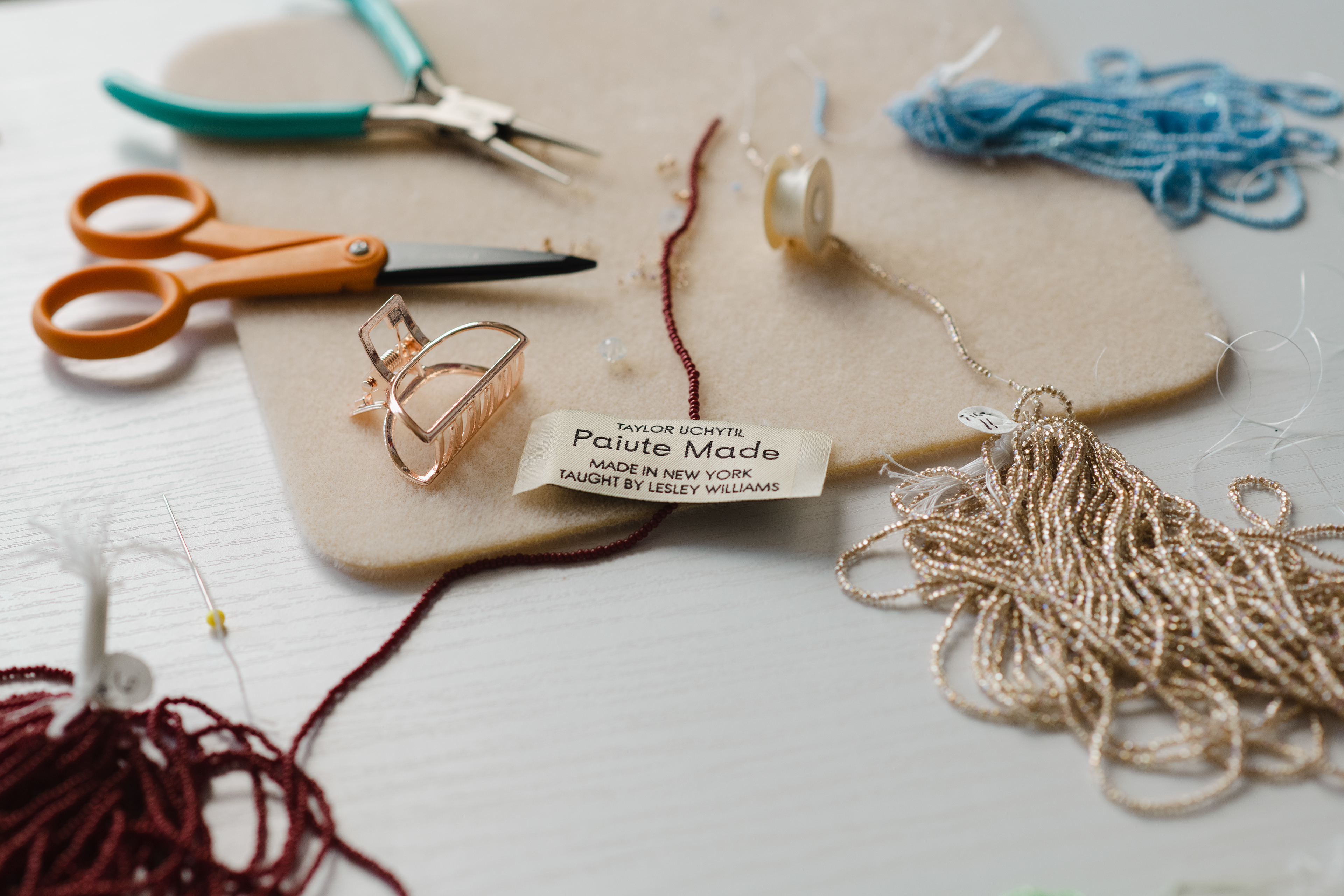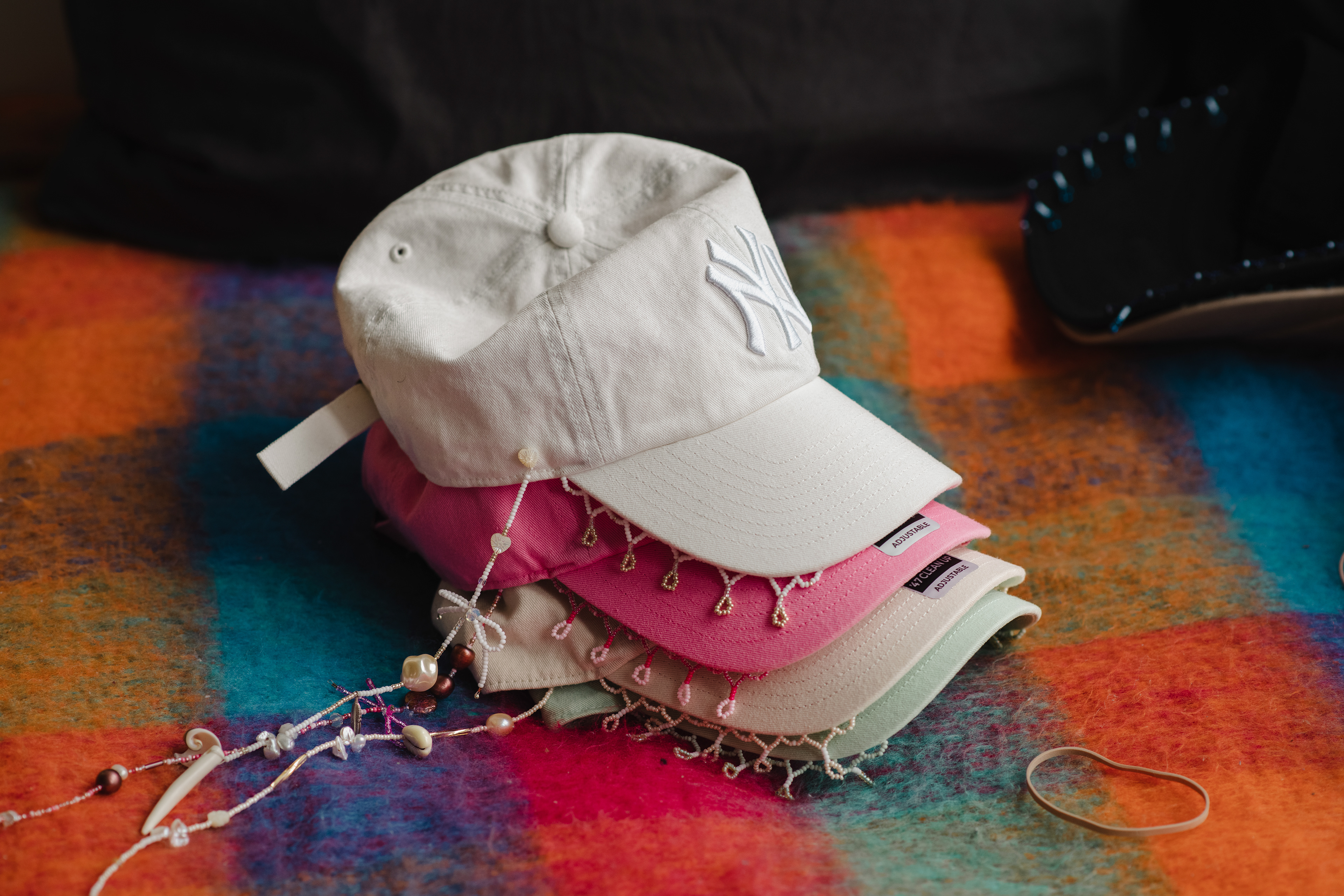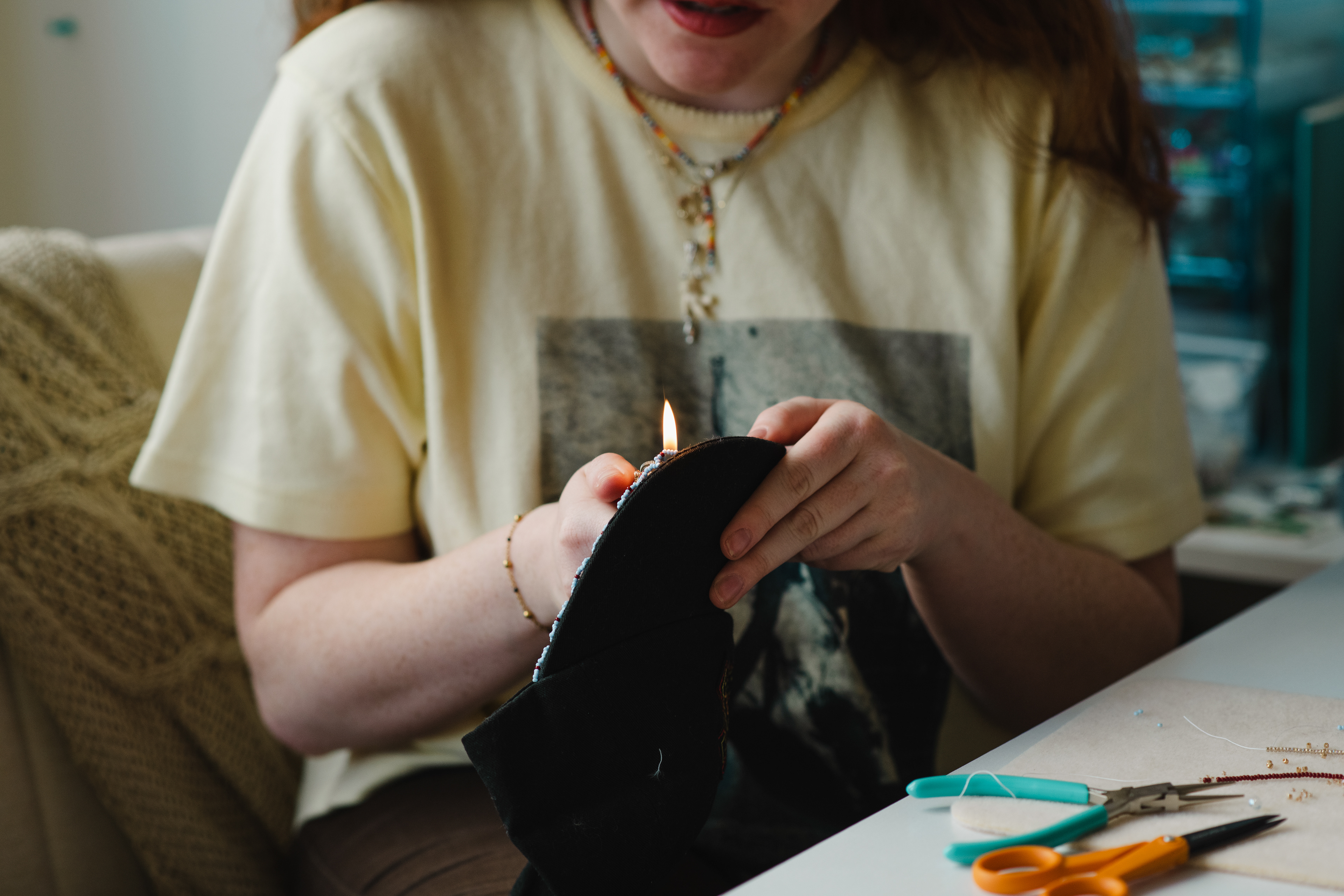What made you think about leaving home?
I’ve always liked Reno, which is not a common thing… But it wasn’t until I was like, “Okay, I really like fashion design. Like, this is really important to me” And the only place I felt like [I could see] if [fashion design] was a career or not, was New York… And I’ve stayed for over three years because now I do love New York.
How was it at first?
I didn’t have any friends here, so I spent a long time just kind of doing my own thing, which I didn’t mind. And then I started to make friends… but [after a while] I realized there was something missing. Like these people don’t totally get me, or there’s a part of me that’s not being seen… I had never had an Indigenous friend before, it’s always just been my family. And now I’m in this place where I don’t have family here. I only have the friends that I’m making. So then that’s when I started to realize what a big role my mom’s family and indigeneity had played in who I am.
How did you start to find other natives?
Well, I was working at this coffee shop… and this guy sat down next to me. He was a middle-aged dude, but he had super long hair with a braid and beaded barrettes. And I was like “I need to talk to you, I have not seen anyone that looks like you in my over two years here in New York”... I had such a desperate feeling that clearly something was missing. So that’s when I went through school and found an indigenous administrator, Luke Davis. He started to organize the first indigenous club at The New School, which is where I met a couple of people. And then he introduced me to Relative Arts, we went to their store opening and that’s where it was like, Oh my God, I’ve never seen anything like this anywhere where it’s like so many different people, so many different tribes that are just taking up space. I’ve seen markets and powwows where you can go to vendors and stuff, but the idea of this being permanent I hadn’t really seen before. So that’s when I really started to find community. [They have] opened the door to so much. And then also, like other spaces. Like AICH, and the Urban Indigenous Collective that I didn’t really know existed. But it typically takes one place, one person, one small community that’s connected and it just sprouts from there. And they just were the one for me and my journey, and I’m so grateful.
What makes the native community in New York different from other cities?
That’s a really, really good question. I think everyone is so different. They’re not all artists. There’s like so many different jobs and careers and people that are working toward different projects or following different paths. But you can see that it’s all often motivated by what they learned through their specific tribe or through their family. And then you see that it’s still relatable to most of us, to almost all of us and very inspiring… It’s not easy to live here. So I think that the people that do are extremely motivated or they have a bit of a purpose, they know what they want and you get to see that from strong creative Indigenous people. Which is really cool.
What advice would you have for an Indigenous person moving to the city?
I would tell them to visit Relative Arts or go to these different places that bring the community together, go to different small events. Maybe it’s an art show for a new artist, or maybe it’s a poetry night. But try to find those places, go to them and engage. I feel like sometimes younger people might lack the confidence to feel like they belong somewhere. And so I would just say that they do, they’re allowed to be in any of these spaces. They don’t need a reason. They don’t need to have great conversations or be super close to somebody specific, just show up and just know that you’re allowed to be there and show up again and again and again… A lot of people, especially in the community spaces, they’re rooting for you.




